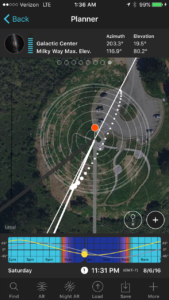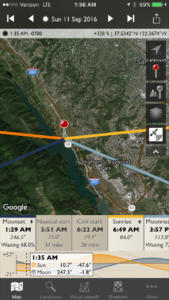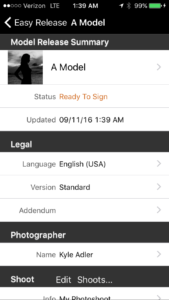Google recently announced a new smartphone app (for iOS and Android) that claims to simplify the planning and management of travel. Called Google Trips, the new tool appears to have some useful capabilities for many travelers, including travel photographers. I’ve had a chance to download this free app and play around with it a little bit. Here’s what I found:
-
- It’s handy to be able to consolidate all of your reservation info in one place. When I travel, I typically enter every flight, ground transportation segment, hotel, meal, and event as separate items in my phone’s calendar app. I link the email messages containing each item’s confirmation info to that item. This allows me to access all of my reservation info in one place, but to set it all up requires quite a lot of time and effort. With Google Trips, you have the option of handling this consolidation in a simpler fashion. I was not able to try this out, though, because it seems only to work for reservations made using gmail accounts, and I am not a gmail user.
- The local content is helpful to have in your pocket. The only reason I still carry a small hardcopy guidebook on many of my trips is for quick and convenient access to information on local attractions, restaurants, and nightlife. With Google Trips, this may no longer be necessary. I looked at the content for two cities I plan to visit in Ireland, Dublin and Dingle. For a large city like Dublin, the app seems to have hundreds of local listings, and a cursory glance confirms they appear to be fairly accurate. However, for smaller towns like Dingle, most of the listings seem not to be local at all, but an assortment of attractions culled from the surrounding region. One would expect the coverage to get better over time.
- Far and away the best feature is the capability to download content. My international data plan, probably like yours, costs an arm and a leg, so when I travel I must turn off cellular data roaming on my phone and use it sparingly to avoid massive overage charges. In one day of using the phone as a navigation tool to stroll around London, I incurred $50 of data charges. Google Trips has the capability of downloading directly to your phone all of the maps and content about local attractions for your whole trip, which means it is always available even when there is no cellular data signal, and it won’t eat up your international data allowance. I haven’t had a chance to test this feature in the field, but plan to do so on my next international trip.
 In a single day of using my phone to navigate on a family trip in London, I incurred $50 in data surcharges. Google Trips’s offline data feature could save a bundle in these situations. Buy this photo
In a single day of using my phone to navigate on a family trip in London, I incurred $50 in data surcharges. Google Trips’s offline data feature could save a bundle in these situations. Buy this photo
- I like the ability to find out what is open nearby and to plan an itinerary to see all the attractions I want in a customized fashion. Just as a good guidebook can suggest an itinerary in a given location for one day, three days, or longer, so can Google Trips recommend top local sights to fit into the time you have available. The difference is that this app can customize your itinerary to include just the sights you’re interested in, and can provide directions from each location to the next.
- Be careful about privacy if you choose to use this app. I have concerns about what data Google says it may collect and how it may use this data. I recommend you read their privacy policy carefully and make your own informed decision about whether to use this app.
You can learn more about the app right from the Google horse’s mouth here: https://googleblog.blogspot.com/2016/09/see-more-plan-less-try-google-trips.html.
Note that I don’t specifically endorse this app or Google products or services in general, nor have I had a chance to use this app in the field. I am providing this information to my readers in the hope that it may be of interest to some. There also appear to be some privacy concerns in this and other Google apps, so be sure to research what data will be collected and how it will be used before deciding whether to use this service.
Have you tried out Google Trips? What do you think? How does it work in the field while you’re traveling? Please share your thoughts here.















